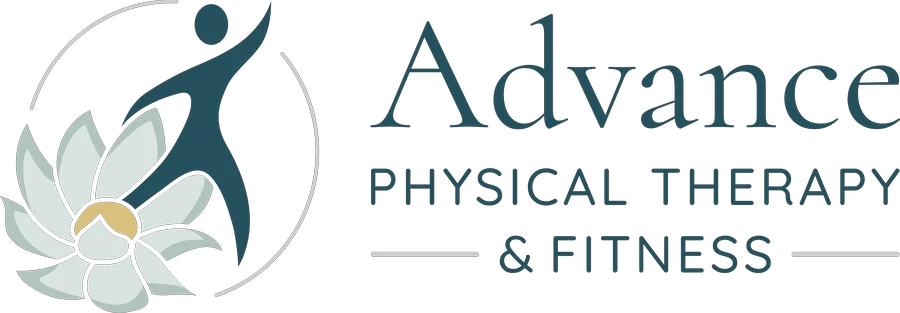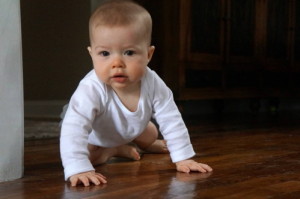Recently, a few parents have asked me if it’s okay for their child to skip the crawling phase of gross motor development. A quick look at the internet reveals an active debate with some people saying that crawling is quite important, while others don’t think it is critical for gross movement development.
Crawling is by definition a mode of locomotion on hands and knees. Crawling leads to shoulder muscle and hip muscle activation and strengthening, which is necessary for upright mobility later.
Crawling promotes movement of one arm at the same time that the opposite leg is moving. This alternating movement pattern enhances the trunk movement necessary for coordinated walking and running when the child is older.
Crawling requires whole body movement in a position of forward-bending. This position serves as an early way to strengthen the abdominal muscles. Once a child is old enough to stand, they tend to use their back muscles for stability. Without balance in the front of the spine from the abdominal muscles, developed during crawling – posture, alignment and muscle use may be compromised.
Crawling allows independent mobility at a younger age than walking. This increases the potential for environmental exploration and learning.
Crawling kick starts visual development. While on hands and knees, a child will look at objects that are close (down at their hands) and then lift their head to look at things in the distance. Crawling further develops the ability to scan the environment from side to side at all levels of head position. This is when depth perception begins to be developed and used.
I have recently worked with several teenagers with back, hip and shoulder pain. Each teen reported scooting on their bottoms instead of crawling on hands and knees when they were little. Bottom scooting promotes an extended or arched posture and movement pattern, with little use of abdominal muscles and little change in head position. Further, kids who scoot on their bottoms don’t get to practice moving from a sitting position to a hands and knees position. Properly moving the pelvis and spine over the thigh bones is an important part of healthy hip and spine movement for walking and running later in life. Often, when these same teenagers start to ask more of their bodies in competitive or recreational sports, abdominal muscle weakness, poor position, poor coordination and muscle use patterns cannot meet the high demands of their sport. Injury and decreased performance are a common result.
So, “To crawl or not to crawl?” is the question. In my 15 years of experience, crawling is definitely the answer!
If you have any questions or concerns about the movement patterns of your infant, toddler or child, I am happy to talk with you, offer clues to look for suggestions to try, or perform a full evaluation in our Chapel Hill clinic.

Lisa Mangino, PT, DPT, PCS, C/NDT is a pediatric physical therapy specialist with 15 years of experience in acute, outpatient, and home health settings. She can be reached at Advance Physical Therapy at (919) 932-7266.

